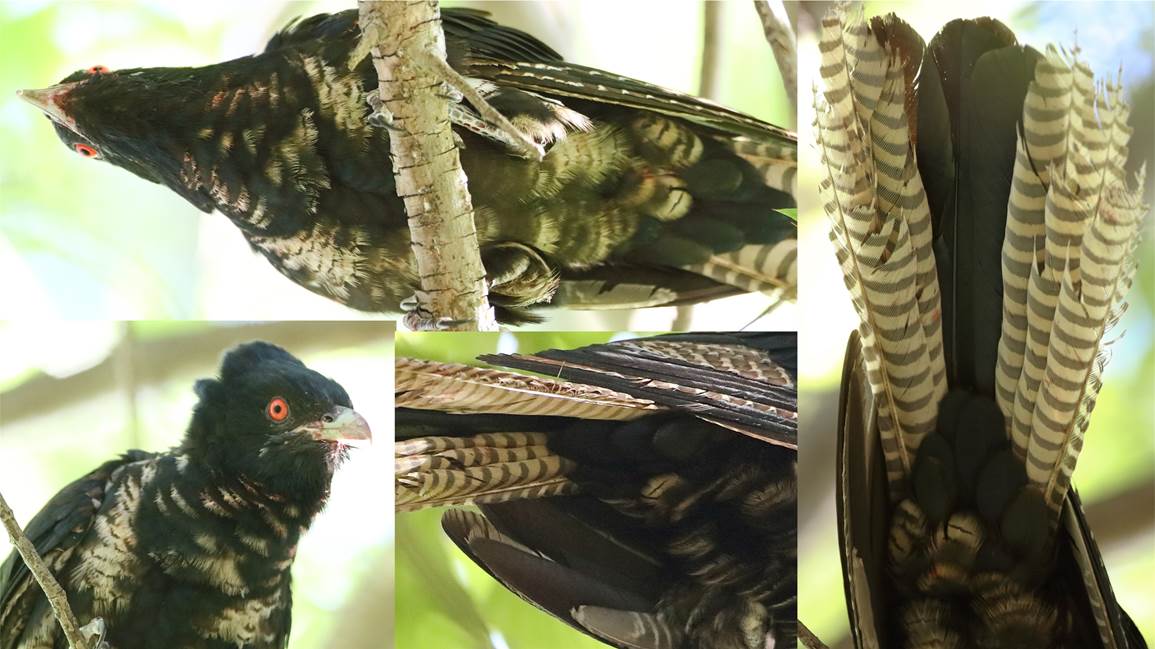Thanks Geoffrey, unfortunately my response to Steve was sent before I read your message. I was busy responding to E-mails received while I was travelling back to Canberra
and didn’t notice some more had come in.
Typically you read HANZAB more closely than I did briefly, including researching the plumage observations you describe. However, we do agree they are probably first
year males.
You describe another example of adult Koel interactions, possibly with the fledgling too or at least within earshot. As we’ve discussed before these noisy assemblages
can also occur well before fledglings are found.
Also very interesting is the “new” male call sounding very similar to the female. In my upcoming paper I discuss 3 further examples of a male (or at least a dark bird,
the light wasn’t always optimum), giving a female call, and note that Virginia Abernathy latest published paper also has an example.
Otherwise I have left calls well alone, including Steve Wallace’s interesting observations from last season, other than to say the calling pattern of adult Koels (and
fledglings too?) is becoming increasingly more complex than usually accepted – it isn’t that long ago that I only recognised the very well known Ko-ell call!
I’ve exchanged messages with Steve Wallace about this. This morning I went to find the unusual male Di White had photographed. I found it deep in the leafy pin-oaks of Carnegie Crescent, where it remained with
another male (in a wurra-wurra duel) for more than an hour. At least 4 males were in the vicinity and 2 females, as well as the beeping chick around the corner in Di’s garden in Caley.
HANZAB notes different views on the complicated question of the second year plumage of the male koel. Is there a distinctive ‘immature’ plumage? There is considerable individual variation. Some birds retain
old juvenile primaries and tail feathers into the second year, along with mainly black new plumage.. This bird shows such, quite worn, along with new black feathers. The worn feathers were those it would have had when leaving Canberra last season (assuming
it was born here). In addition, consistently with HANZAB, the bird has some new feathers on the underparts that, unlike the juvenile, are generally black but, unlike the adult, have a buff fringe.
The immature, if we can call it that, was calling more aggressively than the nearby adult male, as well as doing more than its share of croaking and growling.
I noticed a new loud call by an adult male in flight, rather like a female: ‘chink – chink – chink, chinka-chink’.


